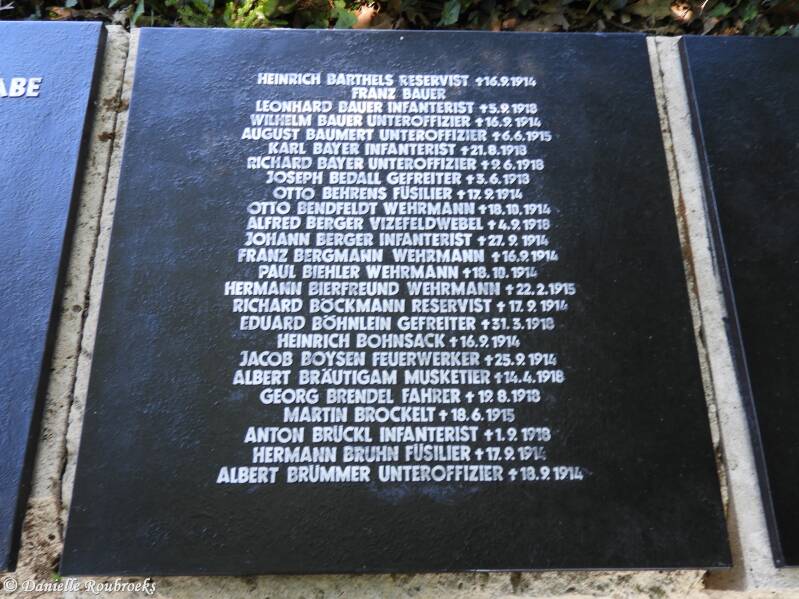Nampcel German Military Cemetery
Historical Information (Source: Volksbund)
11,499 German war dead, including at least 6 fallen soldiers of the k.u.k. Austria-Hungary Army, First World War and 5 German war dead, Second World War. Of the 11,499 fallen, 6,631 rest in individual graves; 94 remained unnamed. In the four communal graves with 5,868 victims, only 933 are known by name.
The German military cemetery in Nampcel was initially laid out in 1919 by the French military authorities as a German-French collective cemetery. In 1922, the French dead were reburied and then the German dead from more than 100 community areas within a radius of more than 35 kilometers were buried together. In this area, those who fell during the fighting were only provisionally buried in field graves or in community cemeteries. Nampcel and the cemetery's catchments area were among the areas that were particularly fiercely fought over in the first and last years of the war. That is why the members of no fewer than 69 infantry and 19 artillery regiments, including the 1st, 3rd and 5th Prussian foot guard regiments, rest in the cemetery. A particularly large number of dead belonged to the Inf.Reg. "Bremen" (1st Hanseat.) No. 75, who died on September 20th and 21st, 1914 while defending against a French encirclement attempt when the German troops tried to build a new front after the Battle of the Marne and the retreat to the Oise and Aisne .
Then it remained relatively quiet in this section of the front until March 1917, apart from fighting in June 1915. In mid-March, the German troops withdrew to the so-called "Siegfried Position" - Nampcel and the surrounding area became a French leg. However, the majority of those buried here died in the course of the major battles and numerous skirmishes in the period from spring to autumn 1918. The German attack on March 21 towards Amiens, the German attack between Reims and Soissons at the end of May and the Attack between Noyon and Soissons on May 30, 1918 as well as the Allied counter-offensive, for the first time with massive American support, which began on July 18 and ended at the end of September with a retreat of German troops in this area.



























































